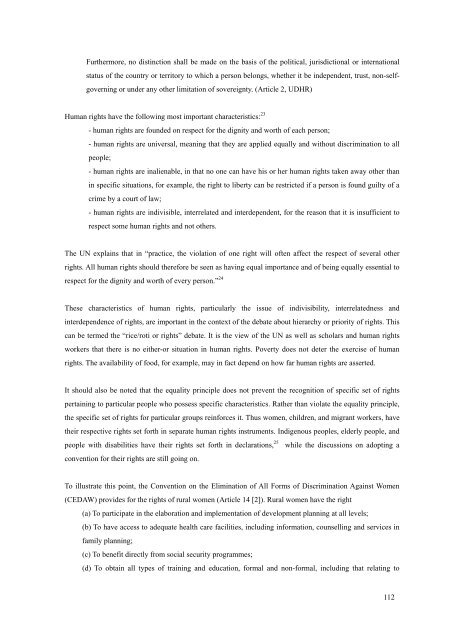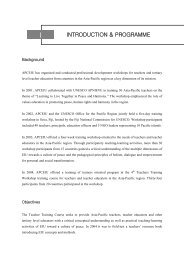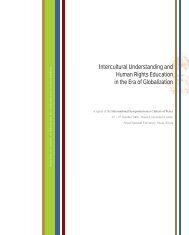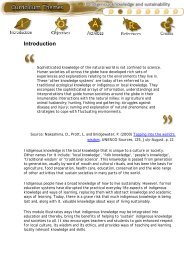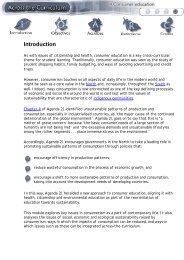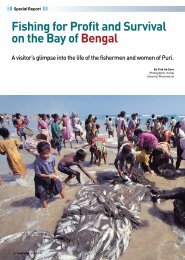REPORT OF UNESCO EXPERT MEETING ON - APCEIU
REPORT OF UNESCO EXPERT MEETING ON - APCEIU
REPORT OF UNESCO EXPERT MEETING ON - APCEIU
Create successful ePaper yourself
Turn your PDF publications into a flip-book with our unique Google optimized e-Paper software.
Furthermore, no distinction shall be made on the basis of the political, jurisdictional or international<br />
status of the country or territory to which a person belongs, whether it be independent, trust, non-selfgoverning<br />
or under any other limitation of sovereignty. (Article 2, UDHR)<br />
Human rights have the following most important characteristics: 23<br />
- human rights are founded on respect for the dignity and worth of each person;<br />
- human rights are universal, meaning that they are applied equally and without discrimination to all<br />
people;<br />
- human rights are inalienable, in that no one can have his or her human rights taken away other than<br />
in specific situations, for example, the right to liberty can be restricted if a person is found guilty of a<br />
crime by a court of law;<br />
- human rights are indivisible, interrelated and interdependent, for the reason that it is insufficient to<br />
respect some human rights and not others.<br />
The UN explains that in “practice, the violation of one right will often affect the respect of several other<br />
rights. All human rights should therefore be seen as having equal importance and of being equally essential to<br />
respect for the dignity and worth of every person.” 24<br />
These characteristics of human rights, particularly the issue of indivisibility, interrelatedness and<br />
interdependence of rights, are important in the context of the debate about hierarchy or priority of rights. This<br />
can be termed the “rice/roti or rights” debate. It is the view of the UN as well as scholars and human rights<br />
workers that there is no either-or situation in human rights. Poverty does not deter the exercise of human<br />
rights. The availability of food, for example, may in fact depend on how far human rights are asserted.<br />
It should also be noted that the equality principle does not prevent the recognition of specific set of rights<br />
pertaining to particular people who possess specific characteristics. Rather than violate the equality principle,<br />
the specific set of rights for particular groups reinforces it. Thus women, children, and migrant workers, have<br />
their respective rights set forth in separate human rights instruments. Indigenous peoples, elderly people, and<br />
people with disabilities have their rights set forth in declarations, 25 while the discussions on adopting a<br />
convention for their rights are still going on.<br />
To illustrate this point, the Convention on the Elimination of All Forms of Discrimination Against Women<br />
(CEDAW) provides for the rights of rural women (Article 14 [2]). Rural women have the right<br />
(a) To participate in the elaboration and implementation of development planning at all levels;<br />
(b) To have access to adequate health care facilities, including information, counselling and services in<br />
family planning;<br />
(c) To benefit directly from social security programmes;<br />
(d) To obtain all types of training and education, formal and non-formal, including that relating to<br />
112


